Hi there fellow steemers, for those who already know me won’t find surprising that I’m sharing information about the place where I live, the small but cozy Uruguay.
This time I want to talk about a project that recently finished some kms from the area I live, I’m talking about the very first sustainable public school in Latin America: Public school 294.

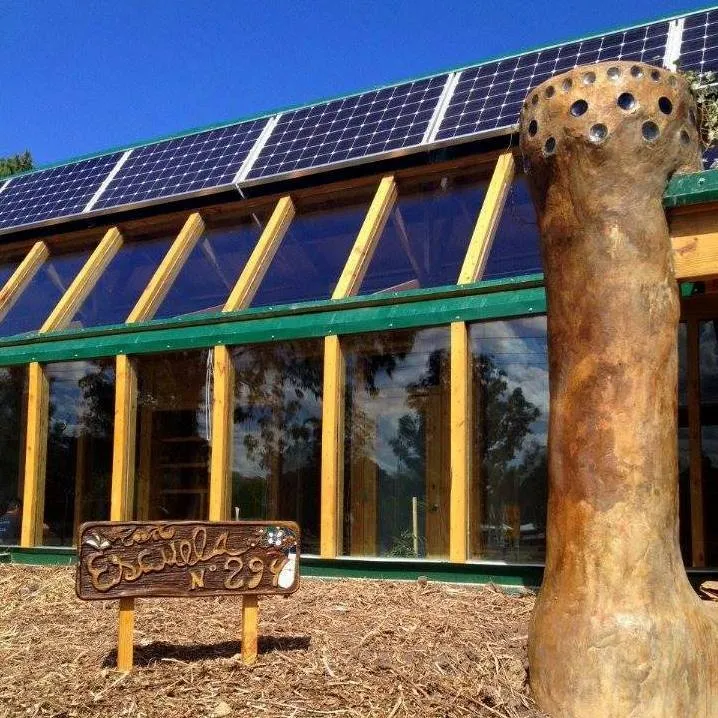
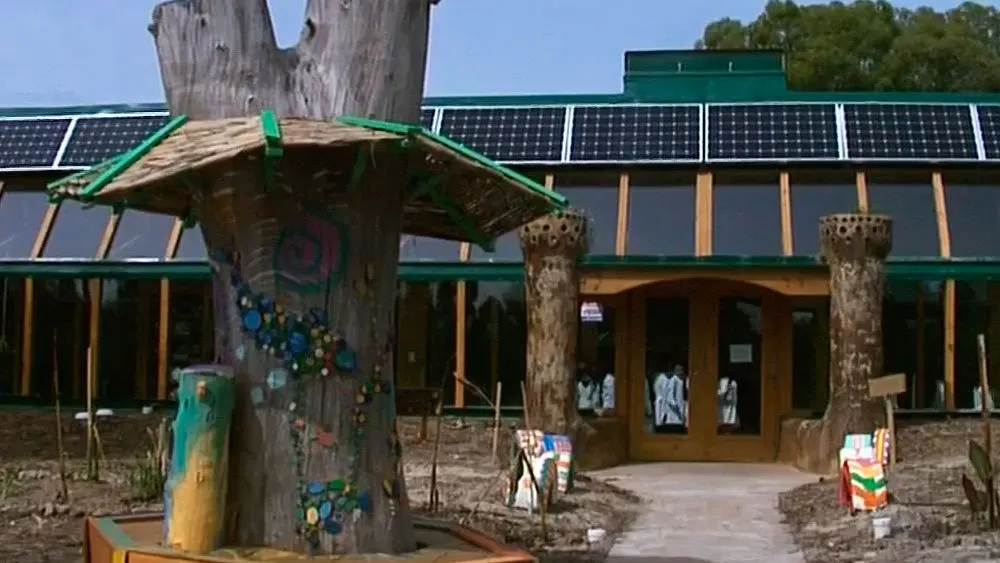
The school was built in Jaureguiberry [-34.781981, -55.419459], a beach city located in Uruguay’s Golden Coast right between Montevideo and Punta del Este with a population of around 500 inhabitants.
This project started in January this year when Michael Reynolds and his team from Earthship Biotecture arrived in Uruguay, it lasted just a bit more than 7 weeks, having being inaugurated the 16th of March, and took the combined effort of 100 eartship academy subscribers and 40 local and non-local volunteers
[check this out if you want to know more about Michael: https://en.wikipedia.org/wiki/Mike_Reynolds_(architect) ]

Michael and team did a joint venture with TAGMA, a non profit local organization created by technical and professional volunteers that have "building and living in a more sustainable habitat" as a mission.
The building has 270 square meters and will host 100 kids each year, which will be lucky enough to grow and be educated in a close-to-nature environment.

The building was made mostly with recycled materials [around 60%], such as 2000 tires used to make the interior walls which were designed to hold the weight of the entire roof. These tires have been filled with more than 2000 square meters of paperboard.

5000 glass and plastic bottles were cut and used to make “bottle bricks”. 8000 cans have been also use as support for the tires making the walls more solid and also used in the school pillars.
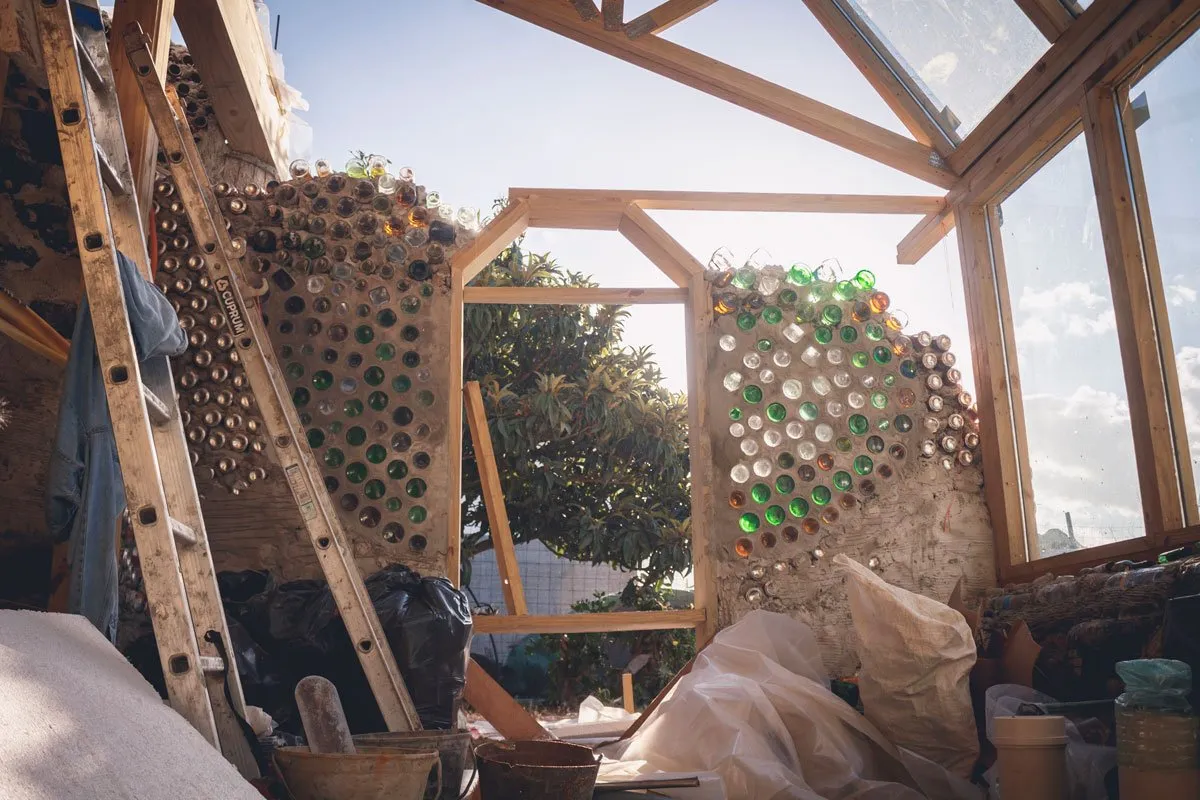
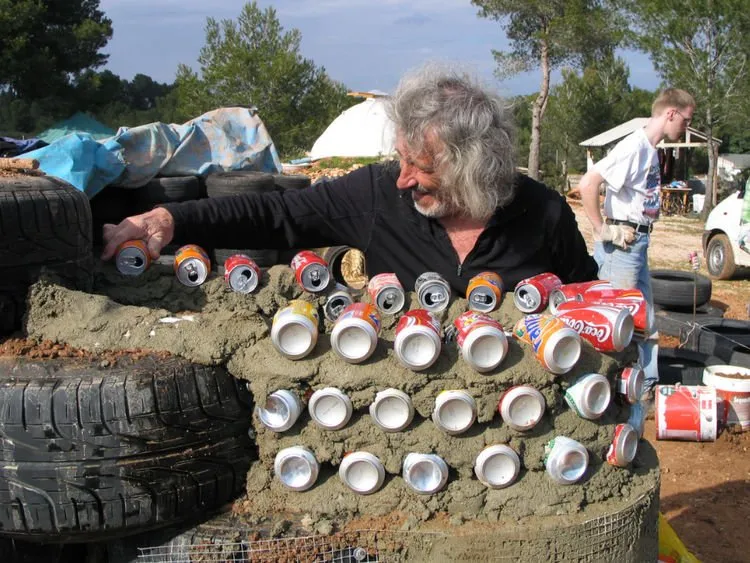
Also 12 solar panels have been placed in the roof and will power the whole school which has more than 8hrs of insolation in average during the whole year.


Like no other possible way in a sustainable school, high beds have been built so the kids can learn to grow, maintain and harvest their own food, which then will be used in the school cafeteria.


Besides the solar panels, an interior garden connected with the whole school through vents has been created. This interior garden will help to maintain a control temperature which is expected to fluctuate between 18 and 22 Celsius by utilizing a passive solar heating system that takes the advantage of the insolation that comes thru the windows during most of the year.

The water for the school will be rain-harvest, having a 33000 ltrs reserve capacity that will be conducted to a water organizing module, where it's going to be filtered and pressurized so to be available in the whole building. Once used, this water will go to a "grey reception" container, from where it's going to be lead to the interior garden feeding the plants, and after this passage its will replenish the toilets for later use. At this stage and once used, it becomes "black water", so it's conducted to an outside septic tank, separating solids and taking the remaining water to the exterior wetland, finishing the cycle.
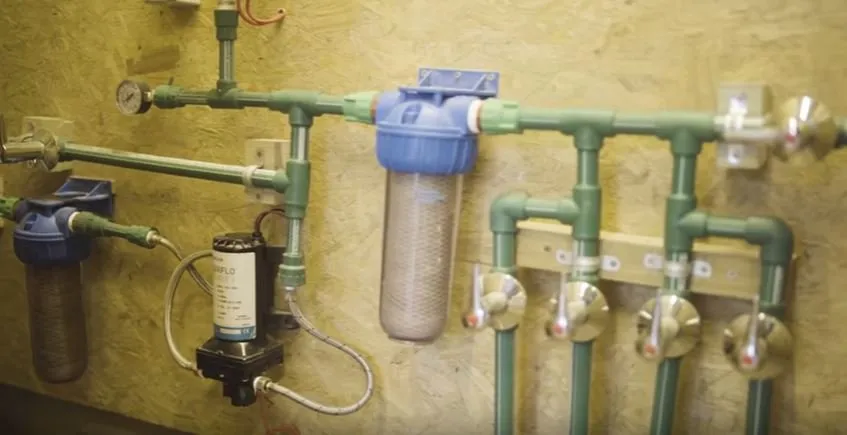
[filtering system]
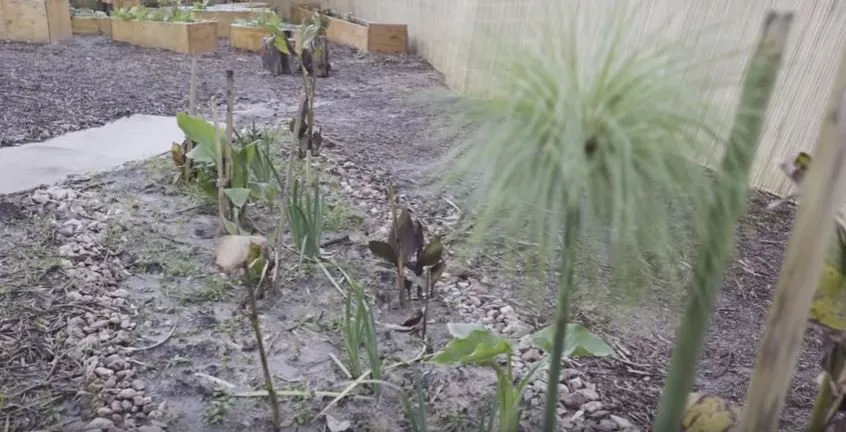
[wetlands]
Above and beyond being a unique project itself, the entire construction was an open doors area, where anybody that was curious enough to travel to the site was able to learn the different techniques directly from Earthship Biotecture members.

If you ask me, this was a small project with a huge impact. Uruguay has a population of around 3 million people and let me tell you everybody was talking about it [I cannot prove this with numbers; it’s just a sentiment measure]. In an era more and more virtual, moving around multi billion projects from the tech industry I believe this is a nice hybrid fit between the synthetic and natural world. I know we have a long way to go, but this certainly is a start.
Here is a link to a cool 360 tour of the school; I invite you to check it out: 
Hope you enjoyed it